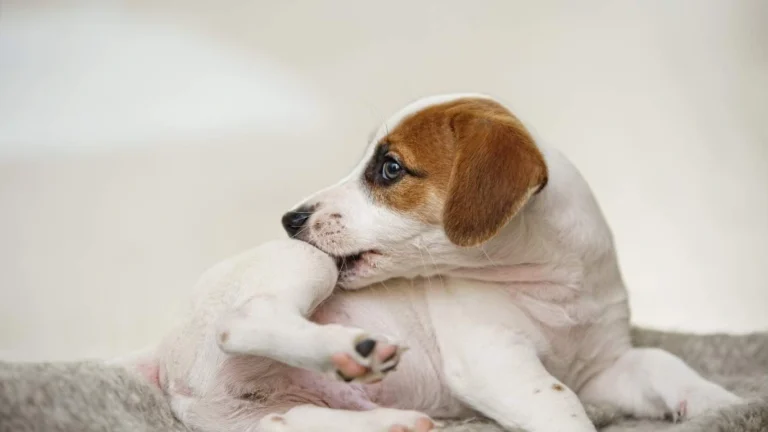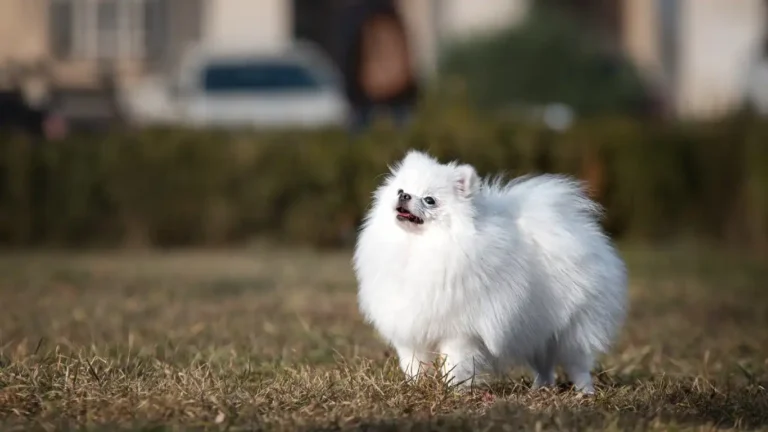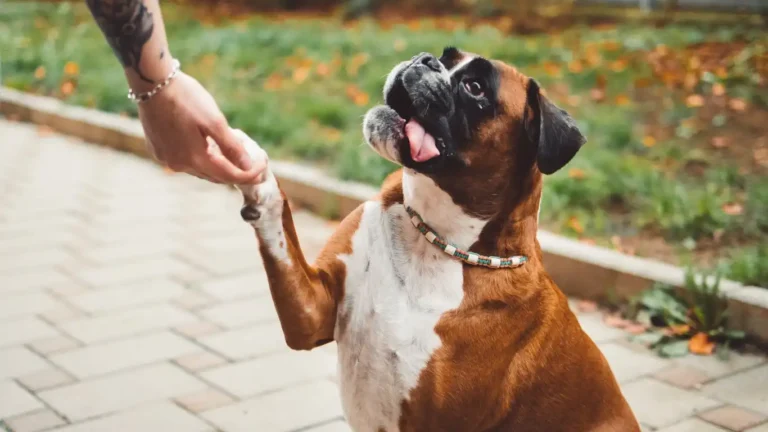Remove Dog Hair from Carpets & Furniture Fast with These Proven Tips
Let’s be real—if you’ve got a dog, then you’ve probably got dog hair. Everywhere. One of the most frustrating parts of being a pet parent is figuring out how to remove dog hair from carpets and furniture without losing your sanity or your entire weekend. As a Veterinary Technician and Nutrition Specialist, I’ve spent plenty of time with pet parents who ask me this all the time. Between all the cuddles and zoomies, that fur just finds its way into every nook and cranny. But trust me, with the right approach and a few tried-and-true tricks, you can totally win the war against fur tumbleweeds.
Understanding the Hair Situation: Why It’s Everywhere

First things first: shedding is natural. Some dogs shed seasonally, some shed all year round, and some just seem to explode in hair daily (looking at you, Huskies). The amount of fur you’re dealing with can also be influenced by your pup’s diet, health, stress levels, and even the weather. Yep, it’s not just your imagination—hotter months can trigger more shedding.
From my clinic experience, I’ve noticed that dogs on a proper, nutrient-dense diet (especially one rich in omega-3 and 6 fatty acids) tend to shed less dramatically. So, it’s not just about cleaning up fur—prevention and overall wellness play a huge role, too.
How to Remove Dog Hair from Carpets and Furniture (Without Losing It)

1. Start with the Right Tools
Let’s talk gear. Some of these tools are total game changers:
- Rubber gloves: Seriously. Slightly dampen them, run your hands over the surface, and watch the hair cling like magic.
- Lint rollers: Great for quick touch-ups, especially on furniture and throw pillows.
- Pet hair removal brushes: These are specifically designed with micro-bristles that lift hair out of fabrics and carpet fibers.
- Vacuum with a pet-hair attachment: This one’s a must. The right vacuum makes all the difference. I personally love ones with a HEPA filter and motorized brush roll—it gets deep into thick rugs where fur loves to hide.
2. Use Fabric Softener Spray (A Little Hack I Swear By)
Here’s one of those little tricks I picked up over the years: mix a small amount of fabric softener with water in a spray bottle (about a 1:3 ratio), give your furniture or carpet a light mist, and then vacuum or brush. The softener helps loosen the fur from the fibers, making it way easier to lift up. Plus, it smells kinda amazing.
3. Squeegee That Rug Like a Pro
This one always gets funny looks until people try it. Take a regular window squeegee—the kind you’d use on glass—and scrape it across your carpet or upholstery. You’ll be shocked at how much hair it pulls up. It’s low-cost, low-effort, and super satisfying.
4. Duct Tape: Old School but Still Gold
Before I had all the fancy tools, I used to grab a roll of duct tape and go to town. Wrap it around your hand (sticky side out), pat it along your couch, and boom—instant fur collector. It’s especially good for weird angles and corners where vacuums can’t reach.
5. Wash and Refresh Textiles Regularly
Removable cushion covers, throw blankets, and slipcovers should be tossed in the wash weekly if you’ve got a heavy shedder. Add a half cup of white vinegar to the rinse cycle—it helps loosen pet hair and reduce static cling, which means less hair sticks in the first place.
Don’t Skip Grooming (Your Dog Will Thank You Too)

Grooming isn’t just a spa day for your pup—it’s a proactive way to manage shedding. Brushing regularly (daily for some breeds) removes loose fur before it ever hits the floor. I always recommend investing in a solid deshedding tool, especially during heavy shedding seasons.
From a nutrition angle, a high-quality diet supports healthy skin and coat, which means fewer loose hairs falling out. I’ve seen dogs go from heavy shedders to minimal mess just by switching to better food or adding in fish oil supplements. If you’re unsure what’s best for your pup, ask your vet (or hey, someone like me—nutrition nerds unite!).
Bonus Tip: Keep a Routine
Honestly, the secret sauce to staying on top of dog hair is making it part of your regular routine. A quick daily sweep or vacuum, weekly deeper clean, and consistent grooming can save you so much time and stress in the long run.
Tech Meets Fur: Gadgets That Actually Work

Now, I’m not usually one to chase every shiny new gadget that hits the market—but when it comes to pet hair, I make exceptions. There are a few tools that have made my life a whole lot easier, and I think they deserve a shoutout.
- Robot vacuums: Some of these newer models are built specifically for homes with pets. They have stronger suction and brush systems designed to scoop up fur without choking on it. I run mine once or twice a day in high-traffic areas—it’s like having a tiny, fur-busting assistant on wheels.
- Handheld vacuums: Perfect for couches, dog beds, and even inside the car. Look for ones labeled “pet hair” with turbo attachments. Trust me, not all handhelds are created equal.
- UV blacklights: Okay, hear me out—this isn’t directly about hair, but it’s clutch for spotting spots you’ve missed when you’re cleaning up fur and dander. A quick scan helps me catch the “invisible mess.”
With all this fancy gear, I still say: use what works for *your* space. I’ve got clients who swear by good old baking soda and a broom, and honestly, if it works, it works!
How to Remove Dog Hair from Carpets and Furniture in Allergy-Prone Homes

Here’s the thing a lot of people don’t realize—dog hair isn’t the real allergy trigger. It’s the dander (microscopic skin flakes), saliva, and proteins attached to the hair. So, if you or someone in your household deals with allergies, you’ve gotta level up your hair removal strategy.
1. Go HEPA or Go Home
I cannot recommend this enough: invest in a HEPA-filter vacuum and, if possible, an air purifier. HEPA filters trap allergens instead of blowing them back into your airspace. I’ve had clients with pet allergies report massive improvements just by running an air purifier in shared spaces.
2. Steam Clean for the Deep Stuff
Dog hair has a sneaky way of embedding itself deep into carpet fibers. Steam cleaning doesn’t just lift hair—it kills allergens and neutralizes odors, too. I try to steam clean once a month and always notice a difference in air quality afterward.
3. Washable Everything
When I’m recommending furniture or home decor to pet parents, I always lean toward machine-washable covers and curtains. Hair builds up fast on fabric, especially in households with high humidity or forced air heating (yep, both can make the fur fly).
If you can toss it in the wash, it’s worth having in your home.
Make Your Dog Part of the Solution

This might sound funny, but I always tell clients: if you want to cut down on the cleanup, involve the source. Keeping your dog clean and groomed can seriously reduce how much hair ends up all over your space.
1. Brushing Schedule (Tailored to Breed)
Each breed has its own shedding rhythm. I had one client with a double-coated German Shepherd who needed brushing *every* day in spring and fall—but another with a short-haired terrier who only needed weekly maintenance. Know your dog’s coat type and adjust accordingly.
Personally, I love using a slicker brush followed by a deshedding tool during seasonal blowouts. It takes maybe 10-15 minutes and saves hours of cleaning later.
2. Bath Time Basics
Bathing your dog regularly (but not too often!) helps remove dead hair before it falls out naturally. I usually recommend once every 4-6 weeks, depending on the dog’s coat and skin sensitivity. Always use a pet-safe, moisturizing shampoo—dry skin can actually make shedding worse.
Bonus tip: use a rubber curry brush during baths. It helps massage the skin and loosen fur without being harsh.
3. Nutrition Check-In
Okay, now you’re in my favorite territory—nutrition! One of the biggest improvements I see in shedding patterns comes from upgrading a dog’s diet. Look for food with high-quality proteins, essential fatty acids (like omega-3s), and minimal fillers. If you’re dealing with excessive hair loss, consider adding salmon oil or flaxseed oil to their meals.
I’ve seen major changes in coat shine, texture, and shedding in just a few weeks with the right diet tweaks. Always chat with your vet before adding supplements, but don’t underestimate the power of what’s in the bowl.
Keep the Routine Manageable
Let’s be honest—no one wants to spend their life battling fur. That’s why creating a routine you can actually stick to is so key. Here’s a quick sample breakdown that I share with clients:
- Daily: Quick vacuum or sweep of high-traffic areas, brush if needed.
- Weekly: Deep vacuum carpets and furniture, wash pet bedding, quick lint-roll on furniture.
- Monthly: Steam clean carpets, bathe your dog (or schedule grooming), check air filters.
This kind of rhythm not only keeps your home looking fresh, but it also makes the process way less overwhelming. Consistency really is the key.
Managing Dog Hair in Multi-Pet Homes

If you’ve got more than one furry friend, then you know the hair situation multiplies fast. I’ve worked with plenty of pet parents juggling two or three dogs (sometimes more), and let me tell you—it’s not impossible to stay ahead of the fur storm. It just takes a bit more planning and consistency.
With multiple dogs, it’s even more important to dial in each dog’s grooming needs. Different breeds shed differently, and sometimes what works for one won’t cut it for the other. In my house, my Labrador needs regular brushing and a strict diet, while my mixed-breed mutt gets by with a weekly touch-up and sheds way less.
1. Zone Cleaning = Game Changer
Break your home into zones and rotate deep cleaning tasks through the week. That way, you’re not spending your entire Sunday vacuuming the whole place. Monday might be the living room, Tuesday the bedrooms, and so on. Trust me—it’s way less stressful and keeps things manageable.
2. Grooming Rotation
If your pets aren’t on the same grooming schedule, set reminders. I use my phone calendar to track who gets brushed when. It helps prevent hair build-up and makes everyone feel pampered. Plus, it’s a great bonding opportunity with each of them—win-win.
Preventive Habits That Actually Work

After years of seeing how dog hair wreaks havoc in homes—and living it myself—I’ve picked up some preventive habits that make a big difference. These tips may seem small, but when done consistently, they seriously reduce how much fur you have to clean up later.
1. Entryway Paw & Fur Station
Set up a little area near the door with a towel, brush, or grooming mitt. When your dog comes inside, give them a quick once-over. Not only does this cut down on fur tracking inside, but it also reduces dirt, dander, and allergens. Think of it as your first line of defense.
2. Choose the Right Fabrics
Some furniture and rug materials just love to cling to pet hair. If you’re shopping for new stuff, stick with tightly woven fabrics like leather or microfiber—stuff that repels hair instead of grabbing it like Velcro. I made the mistake of buying a tweed couch once. Never again.
3. Anti-Static Spray FTW
This is one of those little extras that works wonders. Lightly spraying anti-static spray on your rugs and upholstered furniture makes it harder for hair to stick. Bonus: it helps prevent fur from flying around when you vacuum.
When It’s Time to Call in the Pros
Sometimes, even with the best efforts, you hit a wall. Maybe you’ve got a stubborn carpet that just won’t let go of that layer of fur, or a couch that’s basically grown a second coat. That’s when it might be time to bring in a pro cleaning crew. I know it’s not cheap, but every once in a while, it’s worth every penny.
I had one client who did a professional deep clean twice a year. They said it felt like hitting the reset button—got rid of all the dander, lifted out the hair, and freshened everything up. If allergies or pet odors are starting to bug you, this might be the move.
Making Peace with the Fur
At the end of the day, living with dogs means living with some amount of dog hair. It’s just part of the package. I always remind myself—and my clients—that it’s a small price to pay for all the joy, snuggles, and unconditional love these pups give us.
Instead of fighting it, the goal is to manage it. Create a system that works for your lifestyle, use the tools that make your life easier, and focus on prevention as much as cleanup. Trust me, once you find your rhythm, it gets a lot less overwhelming.
And hey—embrace the little moments. I once found a perfectly curled piece of my dog’s hair inside a closed cookbook. How did it even get there? No idea. But it made me laugh. These fur babies sure do leave their mark (literally and figuratively).
References
Disclaimer
This content is intended for informational purposes only and does not replace professional veterinary advice. Always consult with your veterinarian before making significant changes to your pet’s care routine, especially when it comes to nutrition, supplements, or medical concerns. While these tips are based on my personal experience as a Veterinary Technician specializing in nutrition, every pet is different, and what works for one may not work for another.






